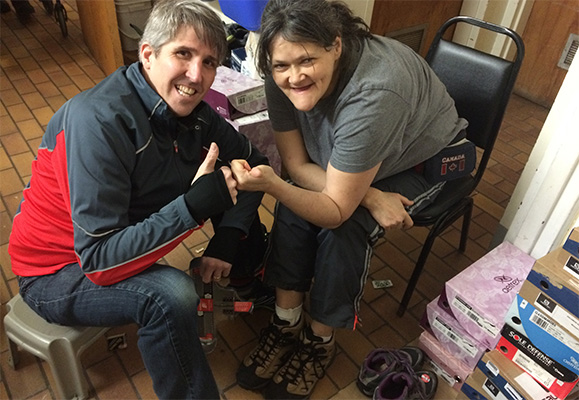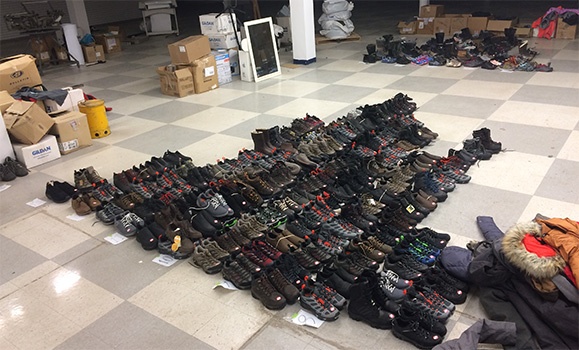As many as two-thirds of the homeless population suffers some form of foot problem at any given time, according to research two Dalhousie medical students recently published in the international scientific journal, PLOS ONE.
Matthew To and Thomas Brothers, both fourth-year students in Dalhousie Medical School’s MD program, found that homeless and vulnerably housed people are seriously affected by a wide range of foot problems — from infections, ulcers, and injuries, to deformities, ingrown toenails, and nerve damage caused by uncontrolled diabetes. For some, problems as severe as frostbite, gangrene and diabetic neuropathy can lead to amputation.
“We found that large numbers of homeless people have foot pain and other problems severe enough to affect their ability to walk,” says To, who worked with Brothers to conduct an extensive search of the world’s scientific literature on the topic of foot problems in homeless people.
“Walking is a primary means of transportation in this population — one study in our review found that the majority of homeless people walk an average of five or more hours a day — so this is a serious limitation.
To and Brothers also found that, in one study, more than 40 per cent of homeless men wear ill-fitting shoes, more than one size too large or too small for their feet. Such ill-fitting shoes can cause or exacerbate foot problems.
Understanding the local context
To and Brothers decided to learn more about foot problems in the homeless population after volunteering with other Dal medical students at the Walk in Our Shoes foot clinic, held on Sundays at the St. Andrew’s United Church on Robie Street in Halifax.
Dr. Colin van Zoost, the clinic’s founder and assistant professor in the Department of Medicine, supervised the students’ research project, a systematic review they conducted through the medical school’s innovative Research in Medicine program.
“It was surprising to see how many people come to the foot clinic, and how many need to keep coming back for repeat care for their problems,” says Brothers. “Foot care is not covered in the community, so they don’t have many options beyond these kinds of volunteer efforts. We think the publicly-funded health care system should be providing evidence-based preventive foot care to this population.”
A helpful collaboration
One key problem is slowly being solved in Halifax, though, thanks to an evolving partnership between the Walk in Our Shoes Foot Care Association and Aerobics First. Luke MacDonald, an expert in fitting shoes at Aerobics First, has been distributing gently worn shoes with Dr. van Zoost since 2007. Aerobics First has been providing new shoes to those experiencing poverty since November 2015, through its Fit it Forward initiative.

Luke MacDonald of Aerobics First has been fitting shoes at the Walk in Our Shoes foot clinic and other locations around Metro since 2007.
“Our suppliers saw what we were doing and asked if they could provide us with new shoes they no longer want to sell, due to a manufacturer’s defect, broken boxes, or other minor issues,” MacDonald says. “We also have a small stream of financial donations from customers, which go into a pending account so we can buy shoes from our broader inventory for the extremely hard to fit, such as those with wide or extra-wide feet.”
MacDonald fits the shoes for homeless people at the Walk in Our Shoes foot clinic and many other locations around Metro. Properly fitted shoes prevent a host of problems for people, who end up with blisters, bunions, deformed toes and other foot issues from ill-fitting shoes.
“People come to the clinic in worn-out shoes, with wet, holey socks and painful conditions of their feet,” says Dr. van Zoost. “Our volunteers — who include practising health professionals as well as medical, nursing and other health professions students –— clean and examine their feet and provide them with the care they need. They leave with clean, dry socks and properly fitting shoes. It makes a huge difference in the quality of their lives.”

